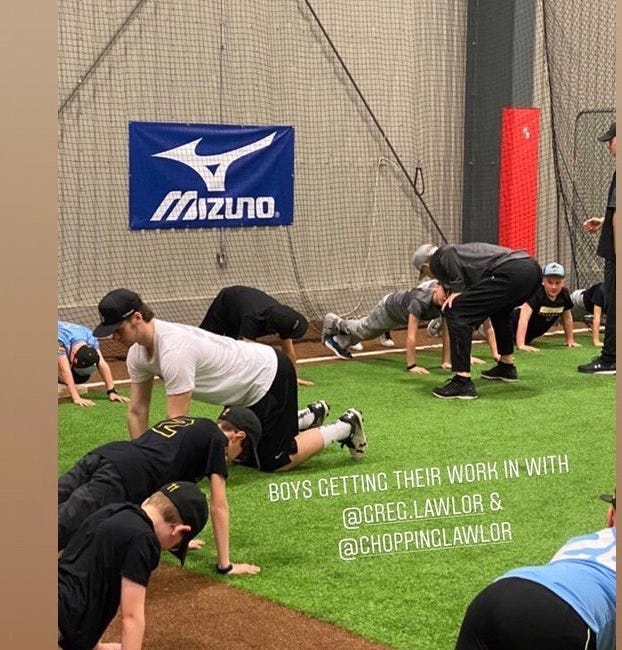TPM #263: Teaching Kids Strong Core Values Through Martial Arts
While there is no wonder recipe in supporting youth development, martial arts can come pretty close.
Wishing you Happy Canada Day Weekend across the Great White North, and wishing the very best to our American friends on their upcoming celebration of Independence Day.
Much of what we have documented in Physical Movement has focused on the challenges in youth sport. Primarily the decline in participation, and of the collective health of our youth as a result. The challenge and consequences to year-round participation in one sport, decline in confidence and socialization opportunities that comes from missing out on positive experiences from playing a sport in one’s formative years. TPM has also documented how many organizations are not so focused on what is best for the individual, running instead with different agendas.
This past week, I was speaking to Coach Doug McKeen on the topic of hitting in baseball. He reminded me of the value of martial arts in teaching our kids fundamental skills that can help them through sport and in life. Skills such as self-confidence, physical literacy and character development.

When we think about finding something for our kids to balance out their athletic pursuits and not just participate in one sport year-round, martial arts makes a lot of sense.
In fact, when we break it down the following are cited as benefits to studying martial arts:
1. Improved physical health, including lowering blood pressure and heart rate
2. Improved flexibility
3. enhanced mental well-being.
4. Improves focus and concentration
5. Reduces stress levels
6. Increases self-confidence
7. Improved coordination
8. Improves self-defense skills
9. Improves self-discipline
10. Opportunities for socialization
11. Cultivation of respect and humility.
In 2024, in working with youth, I can not think of anyone that can not improve or benefit in the above 11 areas. Because our young people’s well-being is dictated so much today by the structured activities the are registered in, martial arts checks a lot of boxes. A lot of boxes!
Choosing a martial art that best suits your needs:
There are over 180 documented forms of martial arts. Some martial arts are more suitable for young children based on their focus on movement competency and discipline. The best martial art for children to learn will depend on their age, personality, physical abilities, and interests.
Popular choices for martial arts options for children include Karate, Taekwondo, and Judo.
When it comes down to it, the best martial art for a child is one they enjoy.
How to find the right martial arts school?
This is very much like picking a strong strength and conditioning coach that was documented in one of our early editions in 2020. (See article below).
1. The goals you have for your child. Examples of how your goals may shape which discipline to study.
· A focus on the self-defense skills (keeping one safe in dangerous situations) would lean on disciplines such as Brazilian Jiu-Jitsu.
· Physical Health: Martial arts disciplines that require greater flexibility, dynamic movements, and cardiovascular training align better for improved physical health. Check out Taekwondo, or Karate.
· Stress Relief: Tai Chi is a combat sport focusing on mindfulness and meditation. It can help individuals reduce stress and achieve inner peace.
2. Finding and connecting with the right school and teacher/coach. The environment in each school is different. Trying some different schools, getting a referral and/or testing for yourself to see if a good match is a critical step.
The hidden gem to a lot of the popular martial arts disciplines is their approach to skill development. It is a very interesting contrast to how youth sport organizations in North America or our Western Culture teach skill development.
In youth sport skill development, the primary focus will be on repetitive drilling (also important in many martial arts disciplines). Martial arts will balance repetitive drills with variability in skill development. Variability is a holistic approach developing a student’s ability to self-organize movements based on task demands and changing environment. This dual approach to skill development allows the nervous system to "remember" movements while also promoting adaptation and progression.
All of the above outline not only benefits in physical development of our young person, assisting them with better health and coordination skills, but also provides mental benefits around confidence, discipline and positive outlook.
In short, it is worth repeating;
Who can NOT benefit from progression in any and all of the above?
Note: when I consider the developmental mindset of an young athlete wanting to improve, one is reminded of Bruce Lee’s practice flow chart. It oozes of humility, confidence and hard work, qualities would love to see in our young people.
The Athlete’s Secret Weapon: The Strength and Conditioning Coach.
Due to inactivity levels in our youth, athletes who want to get the most of their sporting experience must learn how to move better, faster, change directions, get stronger, reduce injury and care for themselves. Traditionally, this fell to the gym teacher and play time outside. Today, neither one exist as they used to, to the detriment of how our kids…
d




